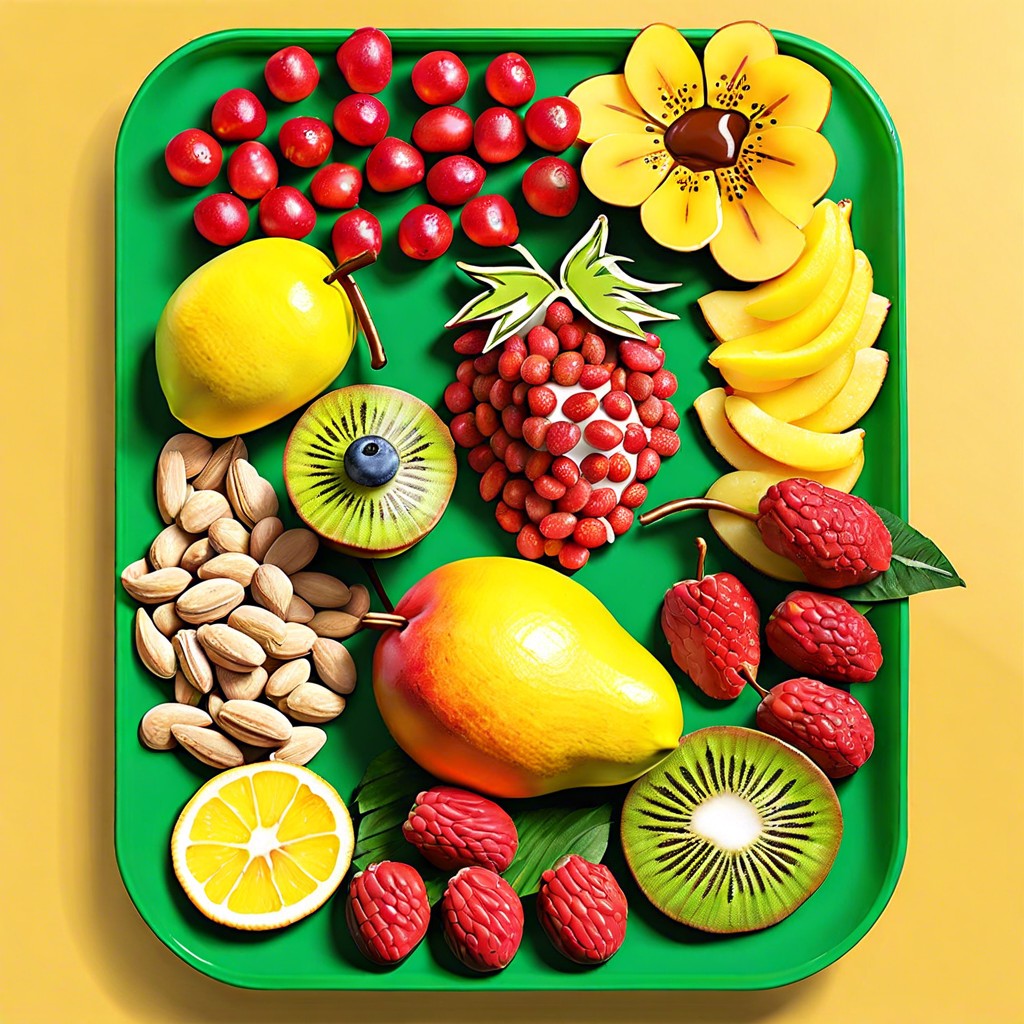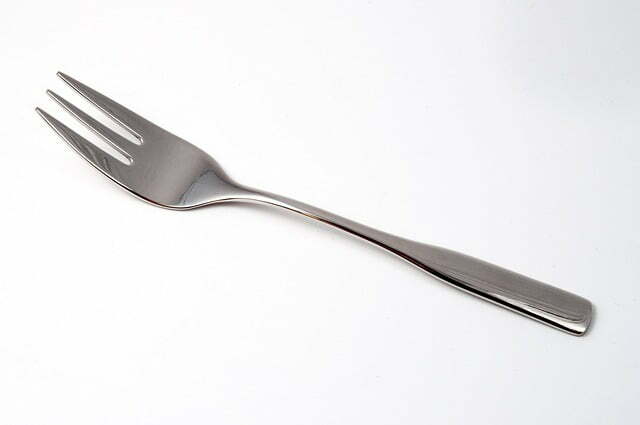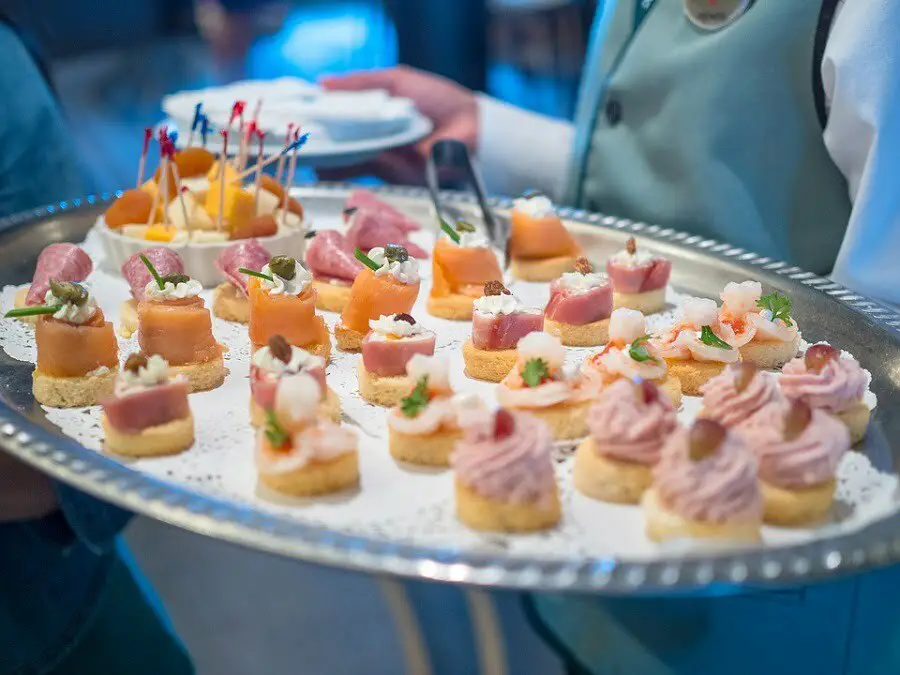A party tray is a large platter or serving dish containing various types of finger foods, snacks, or appetizers, arranged aesthetically for guests to enjoy at social gatherings and events.
Have you ever been to a party or gathering and seen a beautifully arranged tray filled with an assortment of delicious foods? That, my friend, is what we call a party tray. Whether it’s for a family get-together or an office meeting, party trays are the perfect solution for feeding a crowd.
But what exactly is included in a party tray? How do you create one that will impress your guests? In this article, we’ll explore the world of party trays and answer all your questions about this popular food trend. So sit back, relax, and let’s dive into the wonderful world of party trays!
Types of Party Trays

The type of party tray you choose will depend on the occasion, your guests’ preferences, and your budget. Here are some popular types of party trays:
1. Meat and Cheese Tray:</strong> This classic combination is always a crowd-pleaser.
It typically includes an assortment of sliced meats like ham, turkey or salami paired with different cheeses such as cheddar or brie.
2. Vegetable Tray: A vegetable tray is perfect for health-conscious guests who want to snack on something light and fresh at a gathering.
3. Fruit Tray: A fruit tray can be sweet or tangy depending on the fruits included in it; this option provides a refreshing alternative to heavier appetizers.
4. Sandwich Platter: Sandwich platters come in handy when hosting events that require more substantial food options than just snacks; they’re great for lunch meetings too!
5. Dessert Trays – These include bite-sized desserts such as brownies, cookies & cupcakes that make them easy-to-eat while mingling with other guests.
Popular Party Tray Foods
Some foods are more popular than others and tend to make an appearance on most party trays. Here are some of the most popular party tray foods:
1. Cheese: A cheese platter is a classic addition to any party tray and offers a variety of flavors and textures.
2. Crackers: Pairing crackers with cheese or other dips is always a hit at parties.
3. Vegetables: Raw vegetables like carrots, celery sticks, cherry tomatoes, cucumbers or bell peppers add color and crunchiness while being healthy options.
4. Fruits: Fresh fruits such as grapes or berries provide natural sweetness that balances out savory items on the tray.
5. Dips & Spreads – Hummus dip with pita chips; guacamole dip with tortilla chips; spinach-artichoke dip served warm in bread bowls; salsa dips etc., all these spreads offer different tastes that complement each other well when combined together in one platter.
6. Meat & Seafood- Sliced deli meats like ham or turkey breast along with smoked salmon slices make great additions for non-vegetarian guests who prefer protein-rich snacks.
DIY Party Tray Ideas
You can customize the tray with your favorite foods and decorations, making it unique and special for your guests. One idea is to use a wooden board or slate as the base of the tray, adding different compartments for each food item using small bowls or ramekins.
This creates an organized look that’s both functional and visually appealing.
Another DIY option is creating themed party trays based on holidays or events such as Halloween, Christmas, Valentine’s Day, or even sports games. For example, you could create a football-shaped tray filled with snacks like chips and dip for Super Bowl Sunday.
If you’re feeling creative but don’t want to spend too much time on decoration ideas – try arranging fruits in fun shapes like stars or hearts! It’s easy yet impressive-looking!
Party Tray Sizes
The size of your tray will depend on the number of guests you’re expecting and the type of event you’re hosting. If it’s a small gathering with just a few people, then a smaller tray would suffice.
However, if you’re throwing a big bash or corporate event with many attendees, then larger trays are necessary.
Most catering companies offer different sizes for their party trays ranging from small to extra-large options that can feed up to 50 people or more! It’s important to consider how much food each guest will consume when choosing your tray size.
Another factor in determining the right party tray size is what types of foods are being served. For example, if you plan on serving mostly finger foods like mini sandwiches and appetizers along with drinks at an evening cocktail hour reception where dinner isn’t expected – smaller sized platters may be appropriate as guests won’t eat as much compared to say lunchtime events where heavier fare is typically served.
Themed Party Trays
Whether you’re hosting a birthday party, baby shower, or holiday gathering, there’s always an opportunity to incorporate a theme into your food presentation. For example, if you’re throwing a beach-themed party in the summer months, consider creating a seafood platter with shrimp cocktail and crab cakes.
Or for Halloween parties, arrange black and orange foods like olives and carrots on the tray.
The possibilities are endless when it comes to themed party trays! You can even match the colors of your tray with the color scheme of your event for added visual appeal. Don’t be afraid to get creative with shapes too – cookie cutters can help transform cheese slices into stars or hearts.
When planning out themed party trays remember that they should still include variety in terms of flavors and textures so that guests have plenty of options regardless of their preferences or dietary restrictions.
Arranging a Party Tray
The way you arrange your food can make all the difference in how it’s perceived by your guests. When arranging a party tray, start with the largest items first and work your way down to the smallest ones.
This will help you create balance and ensure that everything fits on the platter.
Consider using different shapes, colors, textures, and heights when arranging your foods for visual interest. For example, if you’re making a fruit tray, try cutting some fruits into cubes or wedges while leaving others whole or sliced thin.
Another tip is to use garnishes such as herbs or edible flowers to add color and flavor accents throughout the platter.
Lastly but not least important: don’t forget about spacing! Make sure there’s enough room between each item so they don’t blend together visually nor mix their flavors accidentally.
Ingredients for a Party Tray
You want to make sure that your guests will enjoy the food and that there is something for everyone. The key is to have a variety of flavors, textures, and colors on your tray.
Some popular ingredients for party trays include:
- Cheese: Choose different types of cheese such as cheddar, brie or gouda.
- Meat: Salami slices or prosciutto are great options.
- Crackers: Select crackers with different shapes and sizes like wheat thins or water crackers.
- Fruits & Vegetables: Add some color by including fresh fruits like grapes or strawberries along with vegetables such as carrots sticks and celery.
You can also add nuts like almonds or cashews for an extra crunch factor. Don’t forget dips! Hummus dip pairs well with veggies while ranch dressing goes perfectly with chicken wings.
Remember when selecting ingredients; consider any dietary restrictions your guests may have so they can enjoy everything on the platter without worry.
Making a Veggie Tray
They’re also easy to make and can be customized according to your guests’ preferences. To create a veggie tray, start by selecting an assortment of fresh vegetables such as carrots, celery, cherry tomatoes, cucumbers, bell peppers, broccoli florets and cauliflower.
Wash the veggies thoroughly under running water before cutting them into bite-sized pieces.
Next up is arranging the veggies on the platter in an aesthetically pleasing manner. You can use small bowls or ramekins for dips like hummus or ranch dressing that complement well with raw vegetables.
To add some visual interest you could try grouping similar colors together (like red cherry tomatoes next to red bell pepper slices) or arrange them in rainbow order from left-to-right across your platter.
Finally don’t forget about garnishes! A few sprigs of parsley here-and-there will give your veggie tray that extra pop it needs!
Preparing a Cheese Party Tray
Preparing a cheese party tray may seem daunting at first, but with the right ingredients and presentation, you can create an impressive spread that will have your guests coming back for more.
Start by selecting a variety of cheeses with different textures and flavors. A good rule of thumb is to choose three to five types of cheese such as cheddar, brie, gouda or blue cheese.
You can also add some unique options like goat’s milk or smoked cheeses.
Next up are the accompaniments – crackers or bread slices work well alongside the cheeses. Add some fresh fruits like grapes or berries for sweetness and color contrast on your platter.
To make your tray visually appealing arrange each type of cheese in its own section on the platter while keeping similar colors together so they don’t blend into one another visually.
Creating a Fruit Tray
They’re also easy to make and can be customized according to your guests’ preferences. When creating a fruit tray, it’s important to choose fruits that are in season, ripe, and colorful.
Start by selecting the right tray for your fruit display. A large platter or shallow bowl works well for smaller gatherings while larger parties may require multiple trays.
Next, wash all of the fruits thoroughly under running water before cutting them into bite-sized pieces. Arrange the fruits on the tray in an aesthetically pleasing manner with contrasting colors next to each other.
Some popular choices for fruit trays include strawberries, blueberries, raspberries, grapes (both green and red), kiwi slices (with skin removed), pineapple chunks or rings cut into small pieces along with melon balls such as cantaloupe & honeydew melons which add color contrast when placed together on one side of the platter while citrus like oranges can be added separately at another end of it.
Setting Up a Sandwich Tray
They’re easy to make, customizable, and loved by everyone. To set up a sandwich tray for your next event, start by selecting the bread you want to use.
You can choose from white or wheat bread or opt for something more unique like bagels or croissants.
Next, select your fillings based on what you know your guests will enjoy. Classic options include ham and cheese, turkey and Swiss cheese with lettuce and tomato; however vegetarian options such as hummus with cucumber slices also work well.
Once you have all of your ingredients ready to go it’s time to assemble the sandwiches! Cut them into bite-sized pieces so they’re easy for guests to grab without making a mess.
When arranging the sandwiches on the tray be sure not overcrowd them – leave enough space between each piece so they don’t stick together when people try picking one up.
Designing a Charcuterie Tray
When designing a charcuterie tray there are several things to consider: the type of meat you want to include (prosciutto or salami), the types of cheese (soft or hard), what fruits will complement them best (grapes or figs) and what kind of bread/crackers will be served alongside.
To start off your charcuterie board design process choose 2-3 different types each from cured meats like prosciutto di Parma, soppressata salami etc., soft cheeses such as brie or camembert along with some harder ones like cheddar. Add in some fresh fruit slices such as apples/pears/grapes that pair well with these flavors.
You can also add dried fruit like apricots which go great on top of cheese wedges.
Next up is choosing the right accompaniments – breadsticks/bread/crackers/nuts/honey/jams/pickles etc., all work well here depending on personal preference but make sure they don’t overpower any one flavor too much! Arrange everything neatly on a large wooden board so it looks visually appealing while still being easy for guests to access their favorite items without having to dig through layers upon layers just trying find something they enjoy eating!
Party Tray Presentation Tips
A well-presented tray can make all the difference in how your guests perceive the food and overall event. Here are some tips for presenting your party tray:
1. Use a variety of colors: Incorporate different colored foods to add visual interest and appeal.
2. Arrange items neatly: Place each item on the tray with care, making sure they are spaced out evenly.
3. Add garnishes: Sprinkle fresh herbs or edible flowers over the top of your platter for an extra pop of color and flavor.
4. Use appropriate serving utensils: Make sure you have enough tongs, spoons or forks available so that guests can easily serve themselves without having to touch any food directly with their hands.
5. Label everything clearly: If there are any allergens present in certain dishes or if something is vegetarian/vegan/gluten-free etc., be sure to label them accordingly so that everyone knows what they’re eating.
Safe Food Handling
You want your guests to enjoy the delicious spread without worrying about getting sick from contaminated food. To ensure that your party tray is safe for consumption, here are some tips on safe food handling:
1. Wash Your Hands: Always wash your hands thoroughly with soap and water before preparing or serving any type of food.
2. Keep It Clean: Make sure all utensils, cutting boards, and surfaces are clean before use.
3. Separate Raw and Cooked Foods: Avoid cross-contamination by keeping raw meats separate from cooked foods.
4. Use a Food Thermometer: Ensure that meat products reach their recommended internal temperature using a thermometer.
5. Chill Properly: Refrigerate perishable items promptly after preparation or purchase to prevent bacterial growth.
Food Safety for Party Trays
You want your guests to enjoy the delicious spread without worrying about getting sick from contaminated food. Here are some tips for ensuring that your party tray is safe and healthy:
1. Wash Your Hands: Always wash your hands thoroughly with soap and water before handling any food.
2. Use Fresh Ingredients: Make sure all ingredients used in the party tray are fresh and have not expired.
3. Keep Cold Foods Cold: If you’re serving cold foods like cheese or deli meats, make sure they stay refrigerated until just before serving.
4. Keep Hot Foods Hot: If you’re serving hot foods like meatballs or chicken wings, keep them at a temperature of 140°F or higher using chafing dishes or warming trays.
5. Separate Raw and Cooked Foods: When preparing the ingredients for the party tray, be sure to separate raw meats from cooked items such as vegetables or fruits on different cutting boards to avoid cross-contamination.
Best Practices for Party Tray Storage
Here are some best practices for storing your party trays:
1. Keep the temperature in mind: Most foods on a party tray need to be kept at a cool temperature, so make sure you have enough space in your refrigerator or cooler.
2. Cover the tray: Use plastic wrap or aluminum foil to cover the entire platter tightly before storing it in the fridge.
3. Store separately: If you’re making multiple trays with different types of food, store them separately as certain foods can affect others’ flavors and textures.
4. Label everything: Make sure each container is labeled with what’s inside and when it was made so that guests know what they’re eating and how fresh everything is.
Guests’ Dietary Restrictions
You don’t want anyone feeling left out or unable to enjoy the delicious spread you’ve put together. Some common dietary restrictions include vegetarianism, veganism, gluten intolerance or celiac disease, lactose intolerance and nut allergies.
To accommodate these needs, make sure you have options that cater to each restriction. For example:
- Vegetarian: Offer meat-free options such as hummus with veggies or a cheese platter.
- Vegan: Provide plant-based alternatives like fruit skewers and guacamole with chips.
- Gluten-Free: Include gluten-free crackers and bread for those who can’t consume wheat products.
- Lactose Intolerant: Opt for dairy-free dips like salsa or bean dip instead of cheese-based ones.
- Nut Allergies: Avoid using nuts in any of your dishes.
Budget-Friendly Options
Creating a beautiful and delicious spread can quickly add up in cost. Luckily, there are plenty of budget-friendly options that won’t break the bank.
One way to save money is by making your own dips and spreads instead of buying pre-made ones. Hummus, guacamole, salsa – these all can be made at home for a fraction of the cost.
Another option is to focus on seasonal produce or items that are on sale at your local grocery store. For example, if strawberries are in season and on sale you could create a fruit tray featuring them as the star ingredient.
You could also opt for less expensive proteins such as chicken or turkey instead of pricier meats like beef or seafood when creating meat-based trays like charcuterie boards.
Consider purchasing ingredients from bulk bins rather than pre-packaged items which tend to be more expensive due to packaging costs.
Eco-Friendly Trays
As a result, many people are looking for ways to reduce their carbon footprint and make more eco-friendly choices in their daily lives. If you’re one of those people, you’ll be happy to know that there are now eco-friendly party trays available on the market.
These trays are made from sustainable materials such as bamboo or recycled paper products and can be reused or composted after use. They come in various sizes and shapes just like traditional party trays but with an added bonus of being environmentally friendly.
By choosing an eco-friendly tray for your next event, not only will you impress your guests with your commitment to sustainability but also contribute towards reducing plastic waste that ends up polluting our oceans and harming marine life.
So if you’re planning a gathering soon, consider using an eco-friendly tray as part of your efforts towards creating a greener planet while still enjoying delicious food with friends and family!
FAQ
How many servings in a party tray?
A typical party tray serves approximately 15-20 people.
What are the different types of party trays available for various occasions?
Different types of party trays available for various occasions include meat and cheese trays, fruit platters, vegetable platters, sandwich platters, seafood trays, and dessert trays.
How can one create a visually appealing and balanced party tray?
To create a visually appealing and balanced party tray, one should incorporate a variety of colors, textures, and flavors throughout the arrangement, ensuring an even distribution of items and taking into consideration visual harmony.
What are some popular food items to include on a party tray?
Some popular food items to include on a party tray are cheese, crackers, fruits, vegetables, and deli meats.



